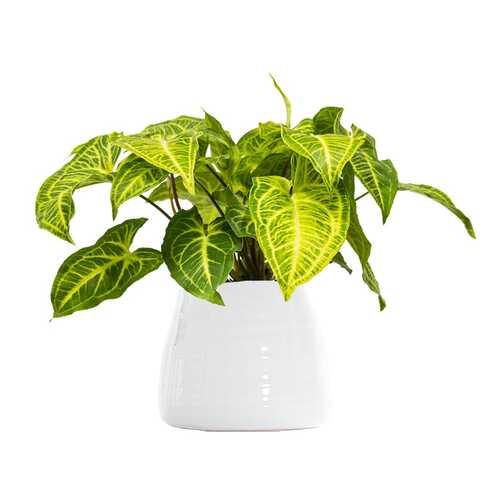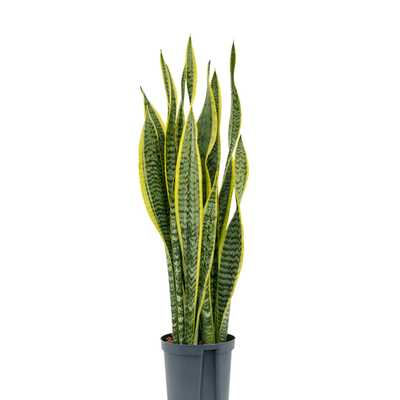Call US : 989124548005
Yucca’s
0 USD
Short Description:
With interesting names such as Adam’s needle and thread, Spanish dagger and Spanish bayonet, this popular houseplant adds eye-catching texture to your home. Usually 1-3 feet in length, yucca’s leaves are dense, sword-shaped with pointed tips. Yucca Filamentosa and Yucca Elephontipes are two most popular species of the plant.Yucca’s overall features:
With interesting names such as Adam’s needle and thread, Spanish dagger and Spanish bayonet, this popular houseplant adds eye-catching texture to your home. Usually 1-3 feet in length, yucca’s leaves are dense, sword-shaped with pointed tips. Yucca Filamentosa and Yucca Elephontipes are two most popular species of the plant.
The evergreen perennial, in the shapes of trees or shrubs, offers clusters of bell-shaped flowers in a tall, spiky formation.
Yucca is easy to grow, in the right circumstances. Instead of too much attention, they cherish moderate care. If good conditions are met, this beautiful houseplant can live for 5 years. Outdoorsy versions can live for 50 years.
The leaves grow from a thick base, which in some varieties can shape into a trunk. The rigid, shiny leaves are slightly thinner than agave leaves, which might sound pretty similar.
Basically, the foliage can range from light blue to a rich and intense shade of green. Generally, the leaves in lower layers are dull and brownish whereas the upper leaves are colorful and vivid.
Origin
From the Asparagaceae family, Yuccas have its origins in North and Central America. They can grow in places like deserts, grasslands, and woodlands.
Light Requirements
Protect the plant from direct sun in summer. Try your best to provide free air circulation through proper ventilation to lower excessively high temperatures.
For ideal indoor growth of the plant, place it in a well-lit corner with a relatively low level of humidity. Gradually, the lower leaves will naturally wither away, causing them to hang down and create a cascading effect around the trunk. This gives the plant a delightful appearance similar to that of a tree.
The low-maintenance yucca plants require only a sturdy container with well-drained soil and adequate sunlight. They are easy to take care of as they grow slowly. They thrive in areas with lots of indirect light: a south-facing window is an ideal place for them.
Severe, direct sunlight will affect the leaves; white discoloration on the leaves and brown leaf-tips are signs that the light is not ok.
Watering
Overwatering is a common issue that can harm plants. So be mindful of how much water you give to yuccas.
To avoid root rot in summer, allow the soil to dry out between waterings. Water once a week in spring and summer.
In winter season, however, water less frequently; once every few weeks or even less.
Proper Soil
This resilient plant can thrive in diverse soil conditions and even in climates different from its native desert habitat.
When growing yucca indoors, use a loose and well-draining potting mix. The plant does not require rich or specially formulated soil. Go for an affordable, economical potting mix. For better drainage, add coarse sand and perlite to the mix.
To promote growth and health of yucca, fertilize it in its growing season. Liquid or controlled-release fertilizer is ideal.
Temperature and Humidity
Yuccas are adaptable to temperatures fluctuations: over 32 degrees Celsius during the day, and at night, as low as 1 ° C. However, the best temperature for the plant is in the range of 15-30 ° C.
Moderate humidity works. The desert-rooted plant can survive in dry conditions without any need for misting.
Note:
Note that yucca leaves are poisonous: so, try to keep pets and children away.
Brief overview:
Botanical name: Yucca
Family: Asparagace
Plant’s classification: Ornamental houseplant
Requirements: bright indirect light, moderate humidity, well-drained soil
| Colors : | Natural |
| Height : | 40cm, 60cm, 70cm, 90cm, 100cm |
| Pot (Liter) : | 4, 7, 10 |
Product Reviews
Similar Products
List of similar products that you can see

Yucca’s
0 USD

Yocca
0 USD

Zamioculcas Zamiifolia
0 USD

Syngonium’s
0 USD

Spathiphyllum
0 USD

Schefflera
0 USD

sansevieria
0 USD

Pothos Silver Splash
0 USD

Pothos adanson
0 USD

.jpg)
.jpg)
.jpg)
